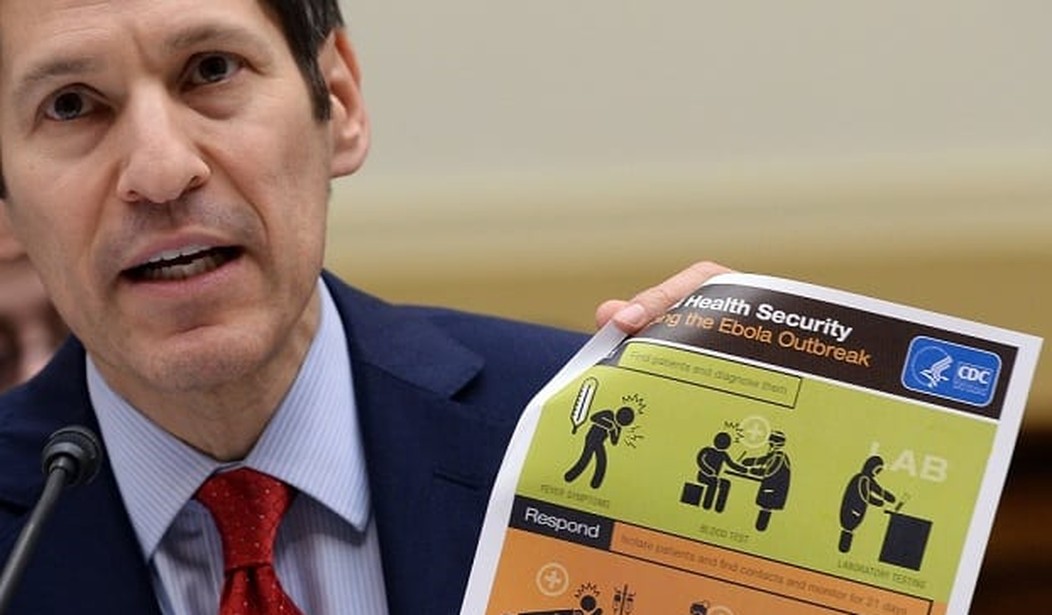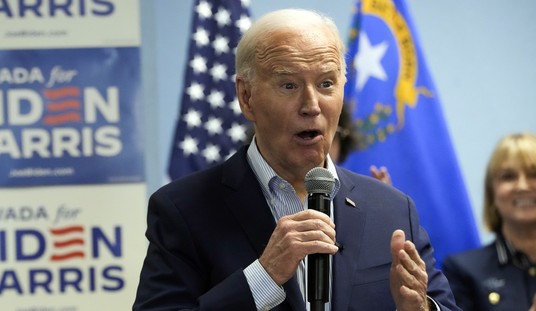 Yesterday, CDC director Thomas Frieden made this assessment of the current Ebola epidemic:
Yesterday, CDC director Thomas Frieden made this assessment of the current Ebola epidemic:
“I’ve been working in public health for 30 years,” Frieden told a World Bank and International Monetary Fund meeting in Washington.
“The only thing like this has been AIDS. And we have to work now so that this is not the world’s next AIDS,” Frieden said.
The AIDS pandemic started in Africa in the 1980s and has killed 36 million people. It took more than a decade to develop effective treatments to cut the death rate and even longer to erase the stigma associated with AIDS.
The current Ebola epidemic — a first of its kind in world history — has killed nearly 4,000 people since last year and shows little sign of abating in three West African countries.
Frieden isn’t a stupid man but this statement is either a blatant appeal for money or one of the more bizarre statements ever made by anyone in CDC, and that covers a lot of waterfront.
The statement flies in the face of everything known about Ebola, including the information Frieden, himself, has put out over the past couple of weeks and the comparison to AIDS, in any way other than a calculated attempt to headline-whore, is dishonest.
The Guardian recently did a very good piece on Ebola but there are a few take-aways in it which show why Ebola only flourishes in Third World crapholes. People infected with Ebola only become contagious once they show symptoms, they are not contagious during the incubation phase. Contrast this, for instance, with a virus like herpes which is infectious during a viral “shedding” phase before any actual symptoms are visible or HIV which is contagious but asymptomatic for years. Unfortunately for the person infected, but fortunately for the rest of us, the symptoms are fairly spectacular. The symptoms make the victim easily identifiable and it reduces their mobility. Consider, the ambulance crew that transported the Dallas patient to the hospital were not infected. Neither were his family in the apartment shared with him.
This is not to say that Ebola isn’t dangerous but the nature of the virus, it can only survive outside a host for matter of hours, the means of transmission, and the vivid nature of the symptoms all make it fairly easy to manage in any nation with a functioning public health system. The real work in Dallas was borne by the State of Texas.
The fact is that Frieden and the CDC are using the Rahm Emanuel dictum of never letting a crisis go to waste:
Congress gave the CDC an emergency injection of $30 million to combat Ebola right before it left town last month. Lawmakers will still have to confront what the agency needs to keep fighting this disaster — and to get ready for the next one, and the one after that.
More than many agencies, the CDC has been hit hard during the last four years of pervasive austerity, with hundreds of millions of dollars stripped from its budget. State and local preparedness has also suffered.
As David Harsanyi at The Federalist notes, the CDC’s problem isn’t a lack of money, it is a gross misuse of the funds it does have and a focus on bullcrap, such as obesity, rather than on stuff that can actually kill us:
Yet, if there is a money crunch, perhaps the CDC needs to rethink it’s scope. The CDC can’t afford to keep a aerial ‘bio-containment unit’ on retainer, but it does have museum, a massive staff and a lots of waste and fraud. In 2007, [mc_name name=’Sen. Tom Coburn (R-OK)’ chamber=’senate’ mcid=’C000560′ ]’s office authored a 115-page report detailing things like the CDC budget gimmicks, the agency’s hundreds of millions of dollars of waste on junkets and elaborate digs and its institutional failures to actual ‘control diseases’ – and this includes AIDs prevention. It’s doubtful things have gotten better.
The CDC, an agency whose primary mission was to prevent malaria and then other dangerous communicable diseases, is now spending a lot of time, energy and money worrying about how much salt you put on your steaks, how often you inhale second-hand smoke and how often you do calisthenics. Though the CDC has done an admirable job in managing the panic surrounding Ebola, it is, historically speaking, a national leader in unscientific panic mongering. You might remember when top CDC scientists declared the “epidemic” of obesity would soon be the leading contributor to preventable death in the United States? The CDC claimed it obesity deaths had risen 33 percent between 1990 and 2000. It claimed that 400,000 people would die from being overweight. It turned out these numbers were made up, and the CDC was forced to revise the estimate by a mere 1,400 percent. That hasn’t stopped it for continuing to scare us about salt, sugar and anything else the Center for Science in the Public Interest (sic) is wringing its hand about these days.
If Ebola, indeed, does have the potential to be an epidemic on the order of that represented by AIDS then he needs to explain to us why we haven’t imposed a travel ban on travelers from those nations where there is an active Ebola outbreak. He needs to explain why we are relying upon screening in African airports, in nations that are so backward that they can’t control Ebola, to identify Ebola carriers. He needs to explain why we are using technology that can be defeated by Motrin as our first line of defense.
The fact is that CDC did all that it could, or chose to do, in Dallas. No part of the goat rope that has characterized their response would have been changed by giving them more money. Dr. Frieden may think this kind of hyperbole serves some bureaucratic goal. It doesn’t. It further damages the already shaky credibility of CDC.













Join the conversation as a VIP Member